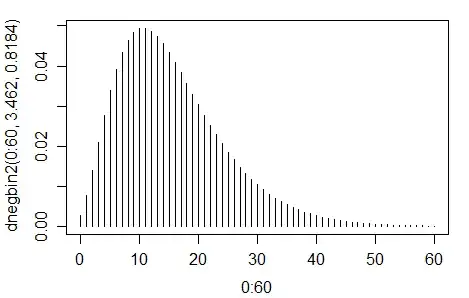I'm really struggling to find a good statistical distribution. I've tried Poisson and Gamma so far, but without success (best I've got was a p-value of 0,00005 with a Pearson Chi-Square test). So I really hope you can send me in the right direction.
The case is as follows: I'm studying the arrival rate for the application for mortgages. I'm trying to determine the arrival rate per hour (thus the number of applications that arrive in a certain hour). This data are the total number of arrivals in a specific hour, in this example between 13:00 AM and 14:00 AM. This is the data: Example data
I'm trying to determine the arrival rate per hour. These data are the total number of arrivals in a specific hour, in this example between 13:00 AM and 14:00 AM. This is the dataset: Example data
As an example I've taken a set with a relative high N.
I got the following metadata of the distribution:
Mean 15,60
St Error 0,32
Median 14,50
Mode 16,00
Standard Deviation 9,27
Variance 85,92
Kurtosis 5,49
Skewness 1,54
Range 68,00
Minimum 1,00
Maximum 69,00
Sum 12853,00
Count 824,00
I also have a histogram:

I've rejected Poisson, since the variance is not the same as the mean. Furthermore I've tried two-parameter gamma with alpha = mean^2/Variance and beta = Variance/mean, but without success.
